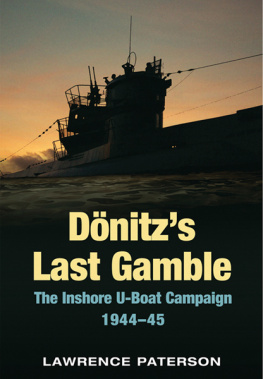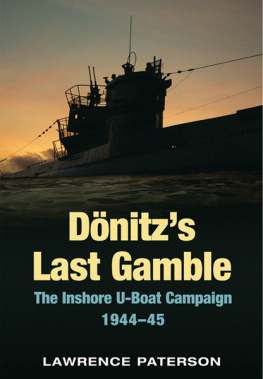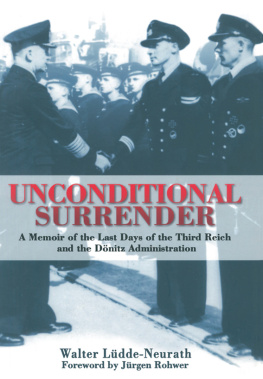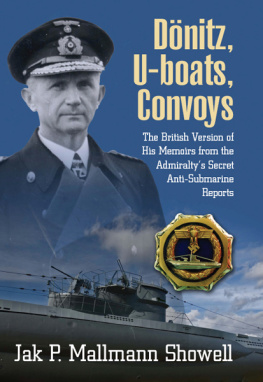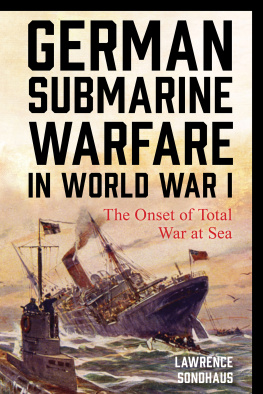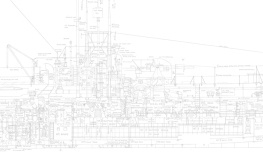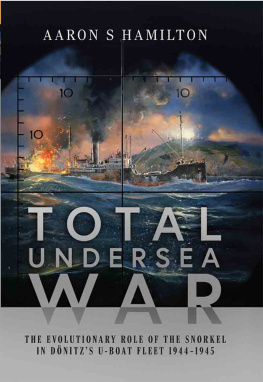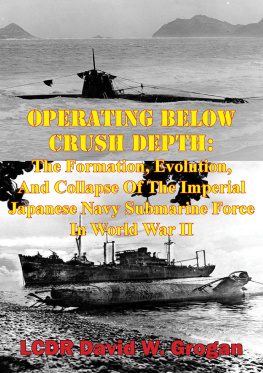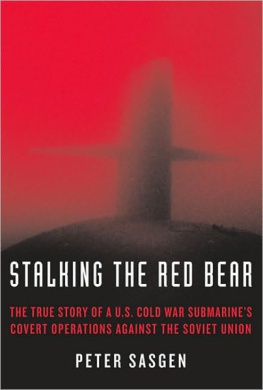
The abortive U-boat attack on D-Day shipping in June 1944 showed just how much Allied ASW weaponry and tactics had mastered Germanys conventional U-boat forces.
Copyright Lawrence Paterson 2008
First published in Great Britain in 2008 by
Seaforth Publishing,
Pen & Sword Books Ltd,
47 Church Street,
Barnsley S70 2AS
British Library Cataloguing in Publication Data
A catalogue record for this book is available from the British Library
ISBN 978 1 84415 714 3
EPUB ISBN: 978 1 78346 949 9
PRC ISBN: 978 1 78346 716 7
All rights reserved. No part of this publication may be reproduced or transmitted in any form
or by any means, electronic or mechanical, including photocopying, recording,
or any information storage and retrieval system, without prior permission in writing
of both the copyright owner and the above publisher.
The right of Lawrence Paterson to be identified as the author of this work has been asserted
by him in accordance with the Copyright, Designs and Patents Act 1988.
Designed and Typeset by MATS Typesetters, Leigh-on-Sea, Essex
www.typesetter.biz
Printed and bound by Biddles Ltd in Kings Lynn, Norfolk.
Contents
Dedicated to the memory of Cozy Powell
Acknowledgements
THREE ARE ALWAYS many people involved in the writing of a book such as this. I would like to begin by thanking Sarah, Megz and James of the Paterson clan (British Section), Ernie (American Section), Audrey Mumbles Paterson and Don Mr Mumbles and Ray and Philly Paterson of the New Zealand branch. Plus, special mention to Julia Hargraves who has been a constant source of encouragement throughout this and other books.
An inordinate amount of excellent and skilled research has been carried out by Axel Niestl to whom this book owes a great debt of gratitude. His assessment of U-boat losses continues and he often makes his findings and general knowledge of the subject which is unsurpassed in my opinion freely available, which is extremely valuable and appreciated.
Special thanks for help and inspiration go to a long list of people, particularly: Jak Mallmann-Showell; Derek and Patricia Ancill; Mike, Sheila, Mitch and Claire French; Cozy Powell (RIP); Paul Beam Robbie; Graham von Pentz; Carl Warner; Dave Andrews; Cath Friend; Tina Hawkins; Paul The Rg Rogne; Blaze Bayley Cook; Brian Johnson; Bonn Scott; Angus Young; Malcolm Young; Cliff Williams; Phil Rudd; Mark Evans; Chris Slade; and of course Nicko McBrain and Mikkey Dee.
Many men from the ranks of the Kriegsmarine, Bundesmarine and Royal Navy and their families have offered unparalleled glimpses into their experiences and much hospitality during visits. My thanks to all of them, but if I could single out some particular people I would like to mention the late Ludwig Stoll and his wonderful wife Inge; Jrgen and Esther Oesten; Gerhard and Traudl Buske; Georg and Frau Hgel; Georg and Frau Seitz; Gesa and Hannlore Suhren; Karl and Annie Waldeck; Volkmaar Knig and Jrgen and Gisela Weber. Also, special thanks to all at the Mnchen U-Bootskameradschaft for many memorable evenings in Munich.
For the many people that have not been mentioned here, I have not forgotten your help and support and it is always appreciated. Cheers.
LAWRENCE PATERSON
NOVEMBER 2007

Introduction
MUCH HAS BEEN made of the vaunted Type XXI U-boat developed by the Kriegsmarine during the final years of the war. Historians, both professional and amateur continue to debate the merits of this revolutionary new style of submarine, the so-called electro-boat with its high submerged speed, automated torpedo reloading and advanced firing system. Indeed, the encounter on 4 May between K K Adalbert Schnee, captain of U2511 and a British task force bound from Norway and centred on the cruiser HMS Norfolk, is often used as proof of the predatory prowess of the Type XXI in the hands of a true veteran submariner. Schnee approached submerged, plotted and fired on the cruiser, waited and then departed without the Royal Navy ships even being aware of his presence. The fact that only hours previously Grossadmiral Karl Dnitz had issued an order to cease fire from all U-boats, forestalled what could have been yet more tragic waste of lives in a war only days from ending in Europe.
In late 1944 and early 1945 western Allied naval commands harboured very real fears about a revitalised and revolutionised U-boat campaign to be launched by Germany. During 1943 the U-boats had been driven from the Atlantic after years of bitter struggle with the convoys that trailed worldwide towards what had been a beleaguered Britain. The ships in these convoys carried life-sustaining food, military material and troops to the sole remaining island bastion that defied Hitlers Germany. By the end of May 1943, due to a combination of numbers, improved convoy tactics, increased air cover and technological advantage all held together by thousands of men of the merchant and military navies Germanys young men of the U-boat service had been forced to concede defeat, leaving a trail of shattered U-boat hulks on sea beds that would ultimately stretch as far as Malaya. The casualty rates in the U-boat service had become horrendous, barely sustainable and yet, incredibly, they continued to sail.
June 1944 saw the Allies land on the French coast in the most famous of all D-Days. The immediate U-boat response was to sail a handful of veteran boats into the maelstrom of Allied warships and aircraft; this led to a slaughter on an almost unprecedented scale that once again demonstrated the Allies comprehensive supremacy over conventional U-boats that the Germans had relied upon so heavily. As the first Allied troops stormed ashore in Normandy, others were already fighting on mainland Italy, as Churchill had pushed for his access to Europe through what he inaccurately described as the soft underbelly. However, despite the arduous and costly fighting that inched up Italys spine, the U-boats that had been assigned to the Mediterranean were also comprehensively beaten and eliminated by September 1944. With the invasion of France, the ports on the Atlantic coast from which Germanys U-boat aces had sailed during their mythical Happy Time gradually either fell to Allied forces or were encircled and eliminated as viable staging posts from which U-boats could sail into combat. The German submariners retreated to their final bastion of Norway. The advance of the Red Army on land correspondingly destroyed the small U-boat presence in the Black Sea, the last of the six small U-boats stationed there being scuttled off the Turkish coast. In the Arctic, U-boats continued to sail against convoys to and from Russia but to less and less effect, since the almost complete victory over PQ17 in July 1942. The U-boat star had waned.
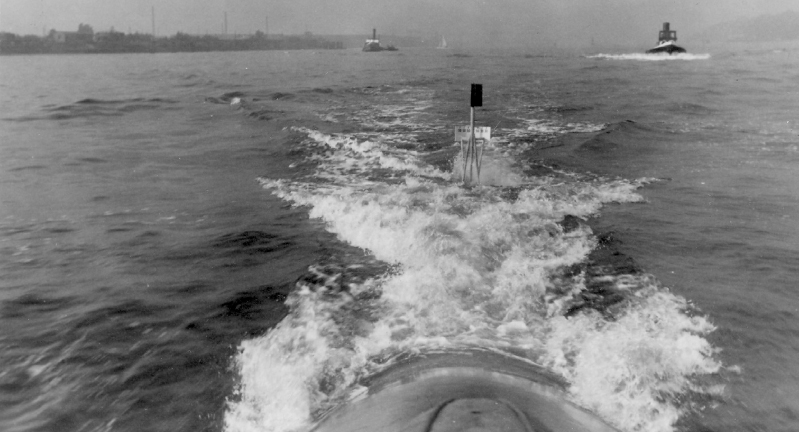
The revolutionary Walter boat, seen here trailing a marker for test purposes, promised large underwater speed and endurance though was never perfected.
However, the Wehrmacht was not beaten yet. Allied forces were arguably guilty of underestimating the ability and resolve of their retreating enemy. The interception and destruction of the U-boats that had attacked D-Day traffic and the almost complete destruction of Germanys naval surface forces lulled the Allies into a sense of security that they were safe from the potential threat of underwater attack within their home waters. The first stirrings of disquiet were caused by intelligence reports of German development of a high-submerged-speed submarine, variously the electro-boat or the experimental hydrogen peroxide-propelled U-boat, the so-called Walter boat. Mastery over the U-boats had been achieved against the conventional diesel submarines: slow underwater, easy to detect while surfaced and vulnerable to remorseless hunting once their location had been given away, usually when attempting to make an attack on a convoy. But in September 1944 began a fresh campaign using those same old U-boat tactics of attacking the enemy in shallow coastal waters the inshore campaign. A handful of large Type IX boats made the journey to Canada and the northern portion of the United States to deliver the revived tactics in those waters, but this book deals with the unexpected commitment of 120 U-boats to the British coastal campaign.
Next page
